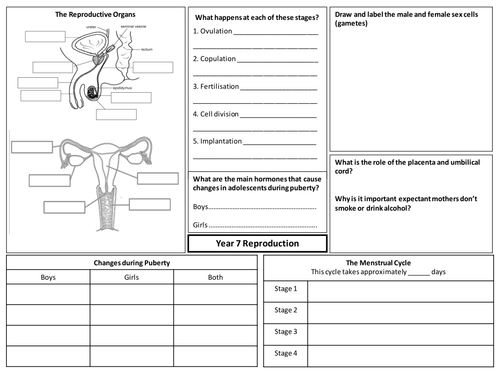
42Uploads
93k+Views
80k+Downloads
All resources

Collapsing can
A resource to go with the collapsing can demonstration. In the format of a storyboard, but it has been differentiated as;
- Gap fill or,
- Card sort or,
- Complete the sentence or,
- Draw the picture to match the words or,
- Write the story to go wit the pictures

Energy Calculations (AQA 9-1 Topic 1)
A worksheet for pupils to practice recalling and using equations. Best used at the end of the topic when all the content has been taught, as all equations from the topic are required.
Starts by recalling units and equations, then asks pupils to apply them to exam style calculation questions. The calculations increase in difficulty down the sheet and are asked at random as they would be in an exam, rather than just repeating one calculation
Answers are provided.

Energy Revision 9-1 - Placemat broadsheet with answers
AQA GCSE Combined Science - Physics Topic 1 Energy 9-1 summer 2018 spec

Energy from food - Burning food writing frame
A writing frame for students who have difficulty setting out an investigation, or keeping up with written work during an investigation.
Investigation - Which food provides the most energy? Burning food to heat water

Uses of Radiation - Research task
A flipped learning/research task for teaching the uses of radiation in medicine and industry. More specifically tailored to GCSE AQA, but could suit other exam boards.
Reccomended pages for pupils who require more structure:
https://www.bbc.com/bitesize/guides/zp4vfcw/revision/1
https://www.bbc.com/bitesize/guides/z2bvdxs/revision/2
https://teachnuclear.ca/all-things-nuclear/radiation/biological-effects-of-radiation/irradiation-vs-contamination/

AQA GCSE Combined Science Physics paper 1 feedback
We used the May 2019 AQA paper 1 for the Year 11 mocks.
Rather than going through the markscheme, I have been trying to encourage my students to think about their answers and learn from their mistakes.
I used these sheets as prompts.
In some classes, I printed the slides out and set it as marketplace activity. Others worked through the slides individually on Chromebooks, some did it as group work.
However, the pictures and texts gave students some stepping stones towards the correct answer.

Christmas Science
A selection of Christmas themed Science lessons, including designing and testing hand warmers for Santa and turning pennies into gold.
Most of these resources are my own, some ideas and resources have been borrowed from others. However, I have pooled resources to make a bank of Christmas themed science lessons, so science can be taught right up until the end of term.

Edexcel (9-1) Topic 6 Radioactivity broadsheet
Radioactivity broadsheet for the Edexcel (9-1) course.
One sheet for both combined and Triple Science students, plus an additional sheet for Triple Science.

Car Safety activity - Design a car for Eggbert
Pupils can apply ideas of car safety, to their own car design. They test their design down a ramp, into a wall, using an egg as a test dummy.
Self assessment sheet provided.

Car Safety - Change in momentum
Car pile up scenario. Pupils have to calculate the momentum of each vehicle, followed by the change in momentum, to calculate impact force. Finally, they have to use the numbers to conclude which driver would have come out worse off.
Answers provided.

Weight and Mass - Planetary Weight
Useful when teaching the difference between weight and mass. Pupils should illicit the idea that if they were to visit another planet, their mass would stay the same but their weight would change as a result of gravity.
Older or more able groups I ask to research the gravitational field strength. Younger or less able groups I send of a tour of the solar system. Put out the planets and ask them to find the gravity.
Unit for gravity is given as N/kg you may wish to change in to m/s/s depending on group and syllabus.

Speed, Velocity and Acceleration
A short worksheet to assess my bottom set Year 10’s understanding of Speed, Velocity and Acceleration. Helped to highlight the fact that just because an object is accelerating faster, does not mean it is traveling faster.
Questions repeated so 2 can be printed per page.
Answers are on the third page.

KS2 Classification - Kingdoms
A lesson on how Linnaeus developed Aristotle’s classification system, naming kingdoms and dividing the anaimal kingdoms into sub groups.
There is a Google slide version of the PP here, please make your own copy.
https://docs.google.com/presentation/d/1qI07691LDhiSmX5MdtJOI9z4qYMn5rZAYO6V9we_gPg/edit?usp=sharing
I am a secondary trained Physics teacher, but have been asked to teach KS2 Biology this year. I have found it quite a challenge! I hope this can support someone who is feeling as overwhelmed as I was.

Series and Parallel Circuits - Current and Potential Difference
This activity uses the PhET circuit builder to help illustrate current and potential difference in series and parallel circuits.
It is a basic introduction and does not consider variables such as resistance. However, it is a clear way of demonstrating the rules, if you have unreliable electrical equipment.
http://phet.colorado.edu/sims/html/circuit-construction-kit-dc/latest/circuit-construction-kit-dc_en.html

Investigation Skills - Does the amount of borax affect the viscosity of silly putty?
Students investigate how the amount of borax affects the viscosity of silly putty. Can be kept as a simple KS3 investigation, or linked to C1 AQA polymers.

Science Careers - Where Can Science Take me?
A research task for pupils to find out more about potential Science careers. Includes a peer marking sheet and a teacher assessment sheet.

KS3 Satellites
A KS3 lesson on satellites
Objectives:
Recall ideas about mass, weight and gravity
State what a satellites is
list examples of artificial and natural satellites
Explain the difference polar and geostationary satellites
Literacy starter
Market place activity to find facts about satellites
Kahoot

Planets, Moons and Satellites crossword
For the AQA Space topic, may be useful for other exam boards or curriculums
Planets, Moons and Satellites crossword
Answers included

Testing for Vitamin C
An investigation to find out which fruit of vegetable juice has the most vitamin C.
PowerPoint and resources are aimed at lower ability groups.




















